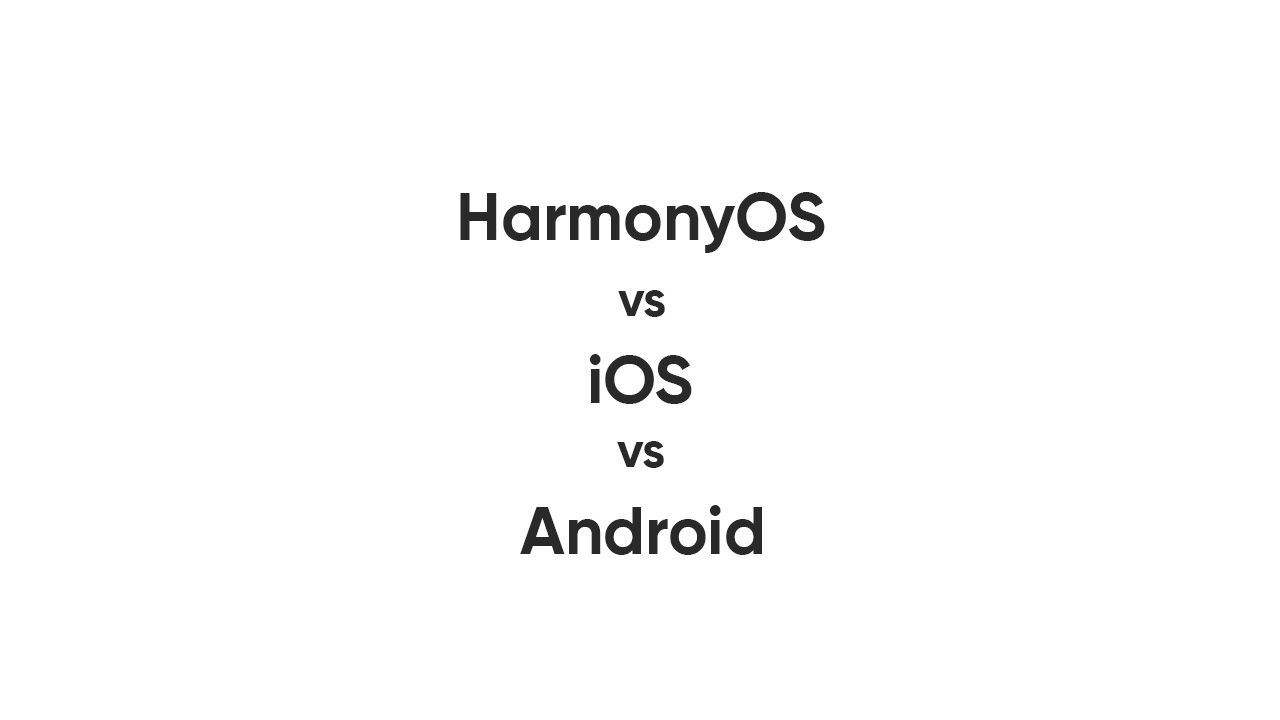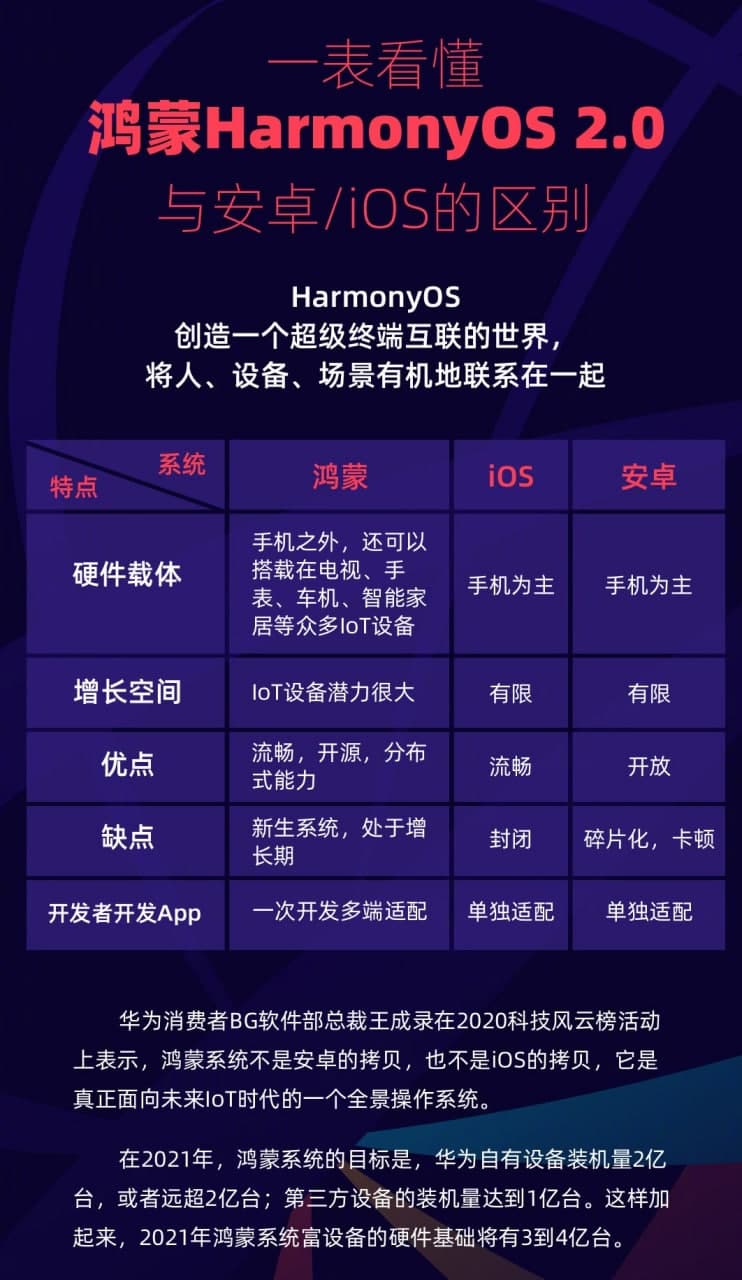HarmonyOS
HarmonyOS vs iOS vs Android: Here are the differences

At Huawei Developer Conference 2020, Huawei unveiled HarmonyOS 2.0 version that supports new device platforms. On January 12 at a Sina 2020 Technology Billboard conference, Wang Chenglu, Software Chief at Huawei Consumer Business Software Department said that the company has aimed to install its operating system on 300 to 400 million devices in 2021.
Wang also replied to critics of HarmonyOS by saying that the HongmengOS is not a copy of Android or iOS. Wang mentioned that HarmonyOS (Hongmeng OS) has vast opportunities in the internet of everything era.
To make things clear, Wang also suggested the key difference between all three of the software systems – Huawei HarmonyOS’ vs Apple’ iOS vs Google’s Android. The comparison mainly shows us the scope of HarmonyOS in the industry, its advantages/disadvantages, as well as platform support.
HarmonyOS vs iOS vs Android
HarmonyOS:
Hardware platform: In addition to the mobile phone, it can also be mounted on many IoT devices like TV, cars, smart home appliances
Growth Area: IoT devices have great potential
Advantages: Open source, fluency, and distributed capabilities
Disadvantages: Newborn system in growing age
Developers develop apps: One-time development, multi-end adaption capability
iOS:
Hardware platform: Mobile phone
Growth area: limited
Advantages: Smooth
Disadvantages: Closed
Developers develop apps: Individual adaptation
Android:
Hardware platform: Mobile phone
Growth area: limited
Advantages: Open source
Disadvantages: Fragmentation, stuttering
HarmonyOS mobile developer beta:
In December 2020, Huawei launched the Beta version of HarmonyOS 2.0 for developers in China. The company initially opened beta testing for Huawei P40, Mate 30, and MatePad Pro devices.
Huawei HarmonyOS 2.0 system is the first distributed operating system that is built to provide a full-scenario ecosystem experience. It supports multi-screen collaboration features, fast network access, adaptive UX for different platforms, one-time deployment, and more.
Also, Check:








